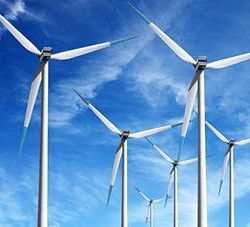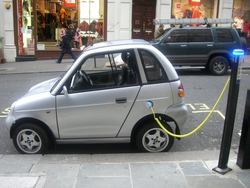 Almost all car and van manufacturers have met European carbon dioxide emission limits several years ahead of their deadlines, according to updated information from the European Environment Agency (EEA).
Almost all car and van manufacturers have met European carbon dioxide emission limits several years ahead of their deadlines, according to updated information from the European Environment Agency (EEA).
A new EEA report, “Monitoring CO2 Emissions from Passenger Cars and Vans in 2013”, presents final data for both vehicle types, updating preliminary data published earlier this year.
The average passenger car sold in 2013 emitted 126.7 grams of carbon dioxide per passenger kilometre (g CO2/km), already below the legal threshold of 130 g CO2/km to be fully reached by 2015. Similarly, the average van sold must have emissions below 175 g CO2/km by 2017, but levels were already at 173.3 g CO2/km last year, according to the updated data from manufacturers and Member States.
There were 11.8 million new cars and 1.2 million new vans registered in the EU in 2013. While both fleets overall are making progress in reducing emission levels, the picture is more mixed when manufacturers are considered individually. Each manufacturer has an individual emissions target, based on the average mass of the vehicles they sell.
Manufacturers and CO2 Emissions: Key Findings
- Updated data confirms findings from preliminary data published earlier this year, which showed that new cars in 2013 were on average 14% more efficient than those sold in 2010.
- Of the individual car manufacturers, Renault had the lowest average CO2 emissions (110 g CO2/km) for new passenger vehicles registered in 2013. Renault, Toyota, Peugeot and Citroen continue to produce most of the lowest-emitting cars.
- Of the 84 car manufacturers in Europe, 55 met their individual specific emissions targets in 2013. These manufacturers represent 99% of all registrations. Manufacturers can also choose to join ‘pools’ in order to meet a collective target. Once pools are taken into account, 72 manufacturers met their allocated targets. Manufacturers selling fewer than 1,000 vehicles may apply for an exemption from targets.
- While electric car numbers account for only a small proportion of total registrations, they are increasing rapidly. The number of purely electric cars in the EU has increased from around 700 in 2010 to around 25,000 in 2013. Plug-in hybrid numbers have also increased rapidly over recent years.
- Vans sold in 2013 were around 4% more efficient than those sold in the previous year. The average emissions levels vary by country, with new vans sold in Malta, Portugal and France emitting on average 20% less than vehicles sold in Slovakia, Germany and the Czech Republic.
- Of the larger van manufacturers, the Renault fleet had the lowest average emissions, followed by Dacia, Peugeot and Citroen.
- Almost all van manufacturers that registered more than 10,000 vehicles met their specific emissions targets for 2013.
Laboratory Versus Real World Driving Emissions
Under the current EU regulations on cars and vans, both the test and vehicle monitoring are based on the New European Driving Cycle Test, helping ensure that CO2 measurements of different vehicles are made on a comparable basis. However, over past years there has been a growing concern that this standardised test is not representative of ‘real world’ driving conditions.
The EEA report includes a comparison of the reported test cycle CO2 emissions with estimated real world emissions. The assessment shows that real world driving conditions may lead to emissions around a fifth higher on average. The difference may be up to a third higher for larger cars, the report shows.
A new test known as the Worldwide harmonized Light vehicles Test Procedure (WLTP) will be introduced in the future so that laboratory results may better represent actual vehicle performance on the road.
Click here to read/download the Full Report.
Source: EEA.














